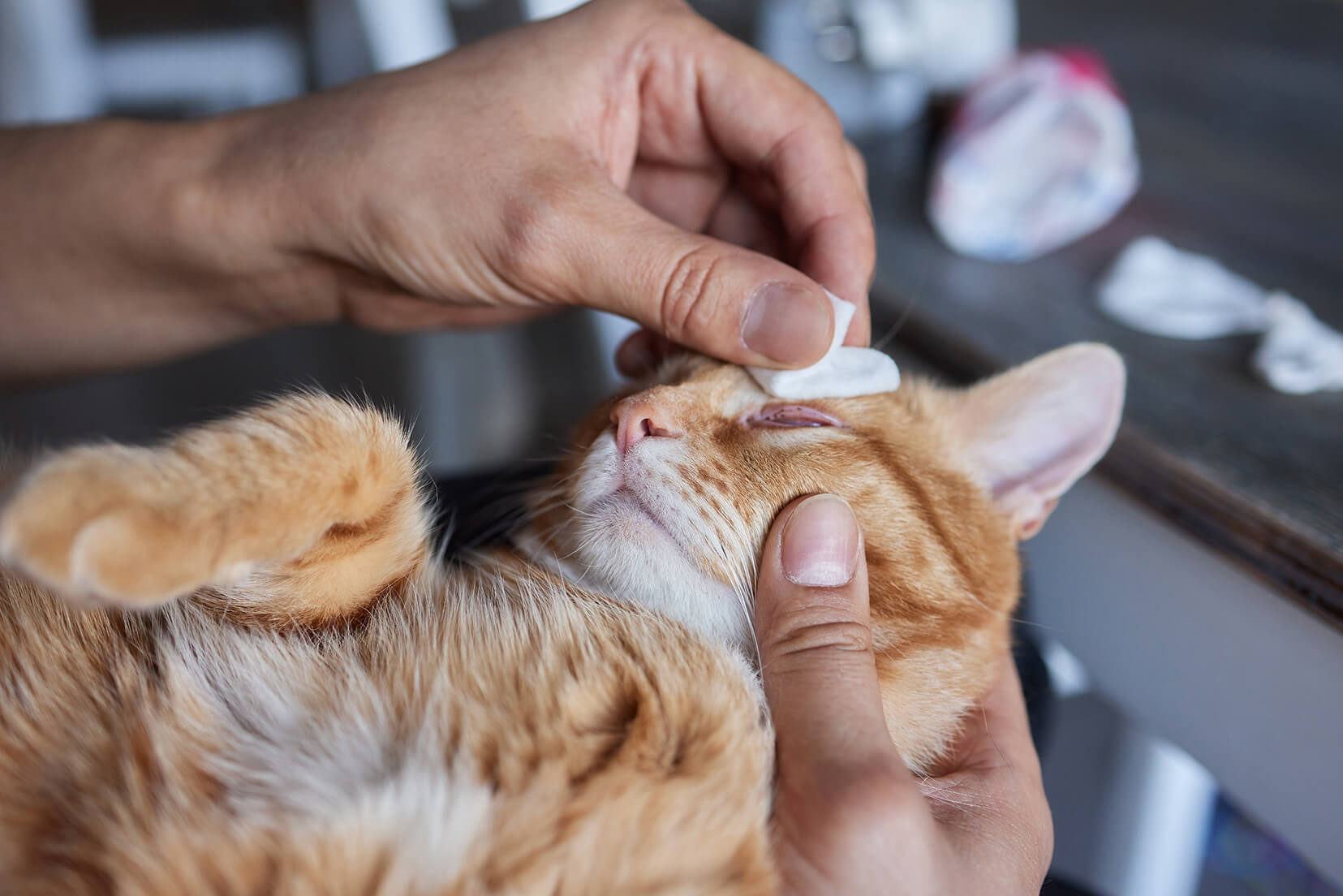
- by Dr.Thilo Senst
Cat Eye Injury Care: Essential First Aid Tips for Pet Owners
- by Dr.Thilo Senst
How to Manage a Cat’s Eye Injury: First Aid Tips
A cat’s eyes are as delicate as they are expressive, and unfortunately, they’re also vulnerable to injury. Whether caused by a playful scuffle, an outdoor adventure, or a scratch from another pet, a cat eye injury requires prompt attention. The aim of this guide is to help you identify different types of eye injuries in cats, understand basic first aid steps, and know when to seek professional help.
Cats often hide pain, making it essential to observe subtle behavioural and physical changes. Here are common signs that your cat may have sustained an eye injury:
If you notice any of these signs, take steps to inspect the eye and administer immediate first aid.
Understanding the causes of eye injuries can help prevent them in the future. Here are some of the most common reasons why cats may experience eye trauma:
By keeping your cat’s environment safe, both indoors and outdoors, you can help minimise the chance of eye injuries.
Providing initial first aid can prevent a minor injury from escalating into a more serious problem. Here are the key steps to follow if you suspect your cat has an eye injury.
Before you begin, wash your hands thoroughly. Cats’ eyes are sensitive, and you don’t want to introduce any bacteria into an already vulnerable area.
Gently hold your cat and examine the affected eye under good lighting. Look for any visible signs of a foreign object, discharge, or swelling.
Refrain from touching the eye with your fingers or any unsterilised item. Direct contact can worsen the injury or introduce infection.
If you notice a foreign object like dust or a small particle, use a sterile saline solution to gently flush the eye. Saline helps to clear minor debris and is safe for the delicate eye tissue.
If there is discharge around the eye, gently clean it with a damp, clean cloth. Avoid touching the eye itself.
A cat with an eye injury may be scared or stressed. Use a calm tone and gentle petting to reassure them. Consider applying Dr. Senst Cat Calming Hemp Oil for Cats to help soothe any stress associated with the injury.
While minor irritations can sometimes be treated at home, certain signs require immediate veterinary attention. Visit a vet if:
Eye injuries can worsen rapidly, so prompt attention from a vet can help save your cat’s vision.
A corneal ulcer is a painful sore on the surface of the eye. It can occur from a scratch or foreign object and usually requires veterinary treatment.
Conjunctivitis is an inflammation of the eye’s outer layer, often caused by infection, allergies, or injury. This condition can lead to a cat’s eye appearing swollen and red.
Foreign objects like sand, dust, or seeds can lodge in the eye. While minor objects can sometimes be flushed out with saline, a vet should remove anything that persists.
Scratches, especially from another animal, are common. A scratch can lead to infection and should be treated promptly to avoid complications.
Contact with harmful chemicals, even common cleaning agents, can result in severe irritation or burns. Seek immediate vet care if you suspect a chemical burn.
Think of caring for your cat’s eye injury as similar to tending a delicate flower in your garden. Just as you would protect a flower from harsh sunlight and trim away any damaged parts carefully, a cat’s eye needs gentle care and attention to prevent further injury and ensure healing.
Addressing a cat eye injury quickly can prevent complications, reduce pain, and potentially save their vision. Here are the primary benefits:
Preventative care goes a long way in safeguarding your cat’s eye health. Here are some tips:
No, human eye drops are not suitable for cats. Use only vet-recommended solutions, like Dr. Senst Antiseptic Cat Eye Drops for Infections, which are specifically formulated for feline eye care.
You may need to use an Elizabethan collar or cone to prevent your cat from scratching or rubbing the injured eye, which can worsen the injury.
If there’s no improvement within 24 hours, consult a vet. Persistent symptoms may indicate a more severe injury requiring professional treatment.
Ensuring your cat’s eye health is vital, especially after an injury. While initial first aid is crucial, the right products can support recovery and prevent infection. Here are some recommended Dr. Senst products to keep in your pet first-aid kit:
By incorporating these tips and products, you can provide the best care for your cat’s eye injuries and ensure a swift and comfortable recovery. Remember, a cat’s eyes are a window to its health and emotions—keeping them safe and healthy is a fundamental part of responsible pet care.
![]()
Enter your details & download our comprehensive 50+ page printable Dr. Senst Pet Care Planner completley FREE! - keep track of all your pet’s needs, from medical history and training to vet visits, grooming, diet, and more!










Share:
Detecting and Treating Fungal Ear Infections in Cats: Essential Guide
How to Keep Your Dog Calm During Car Rides: Tips for Travelling